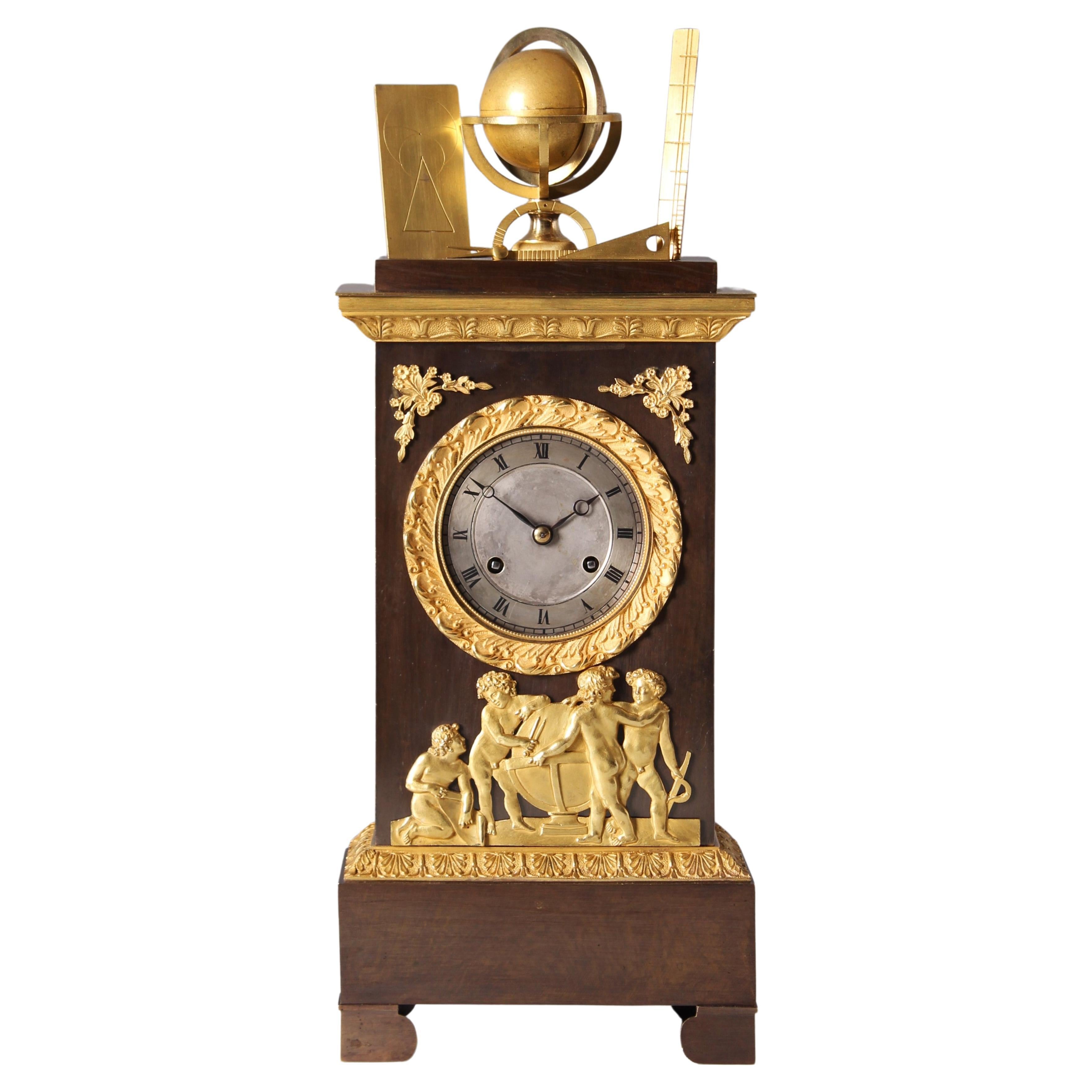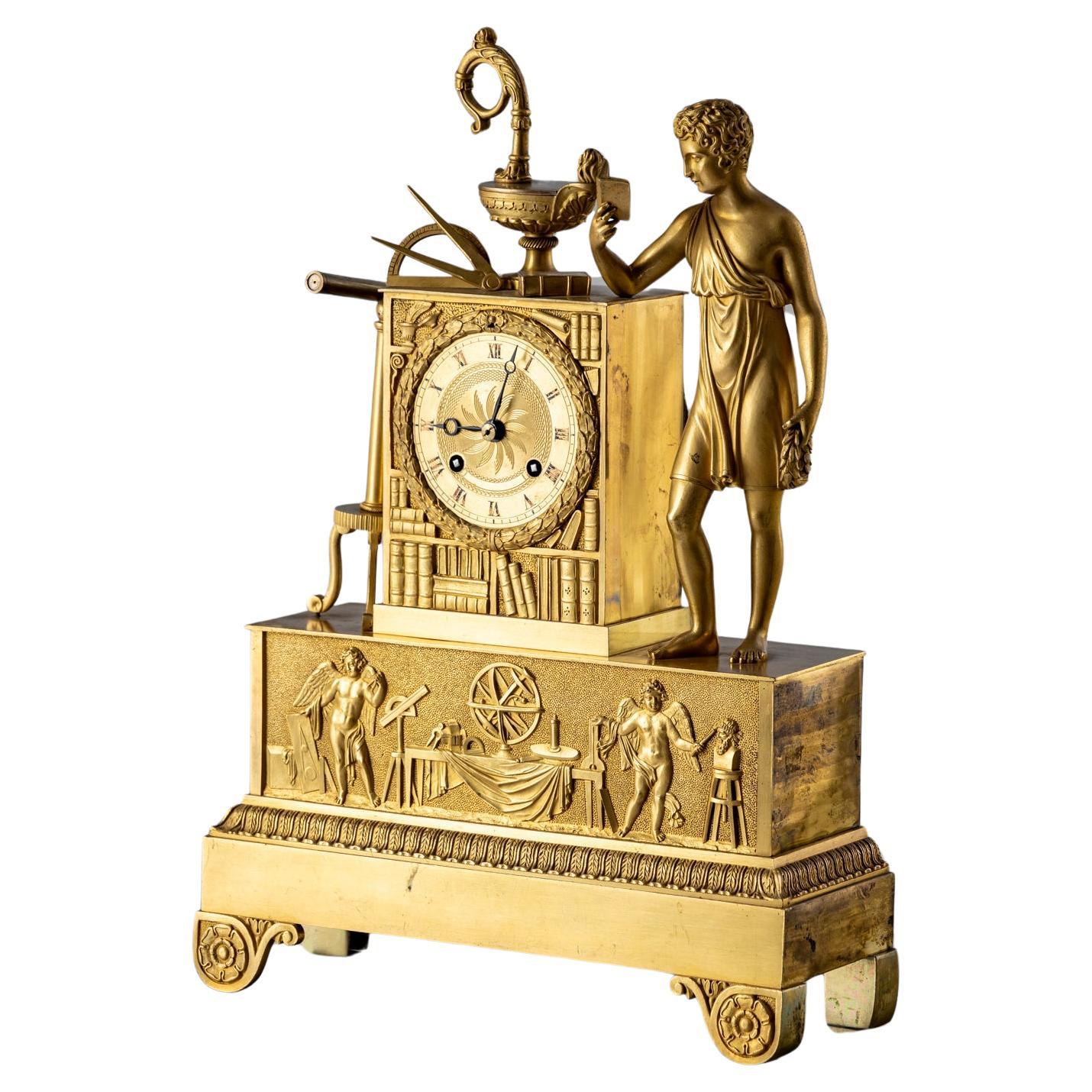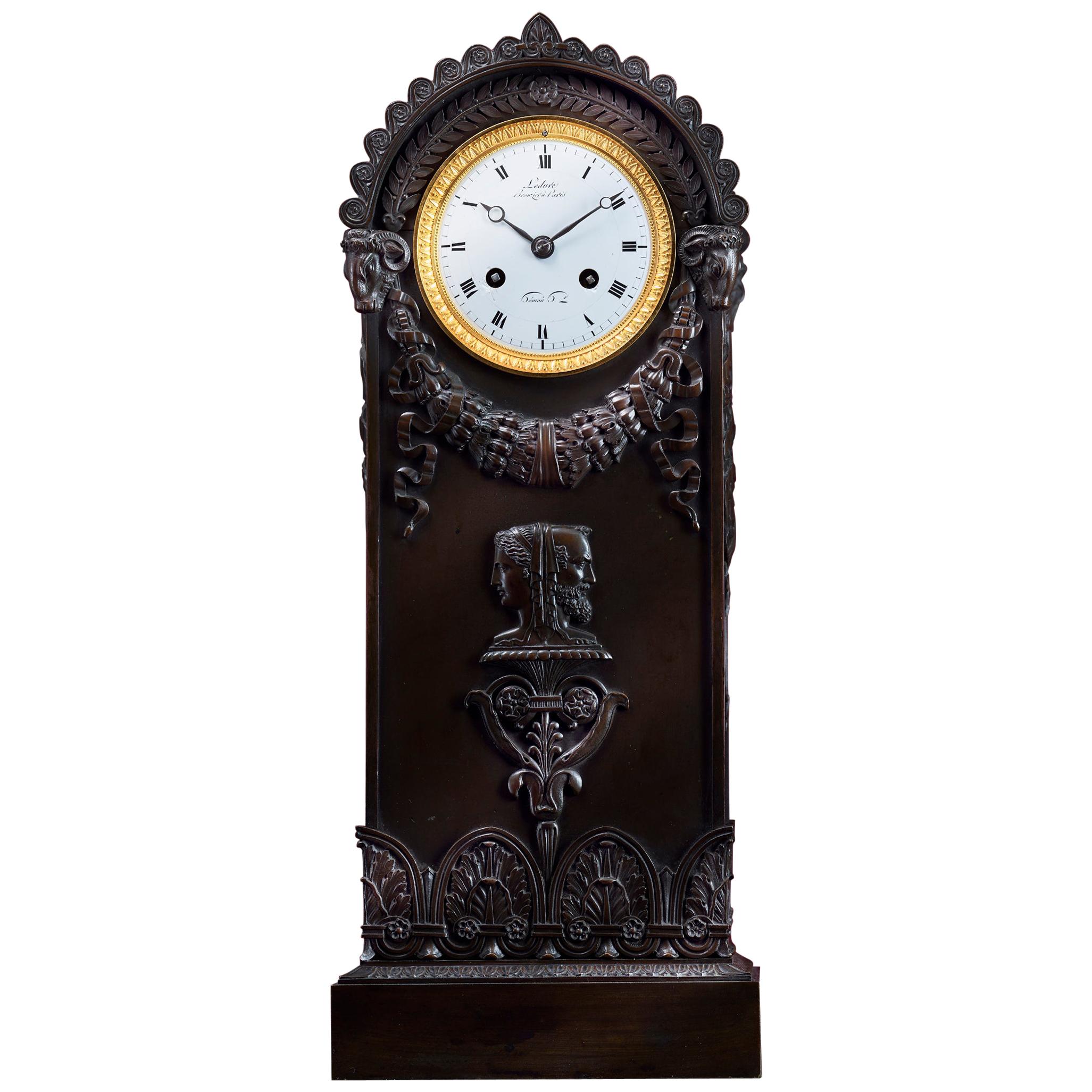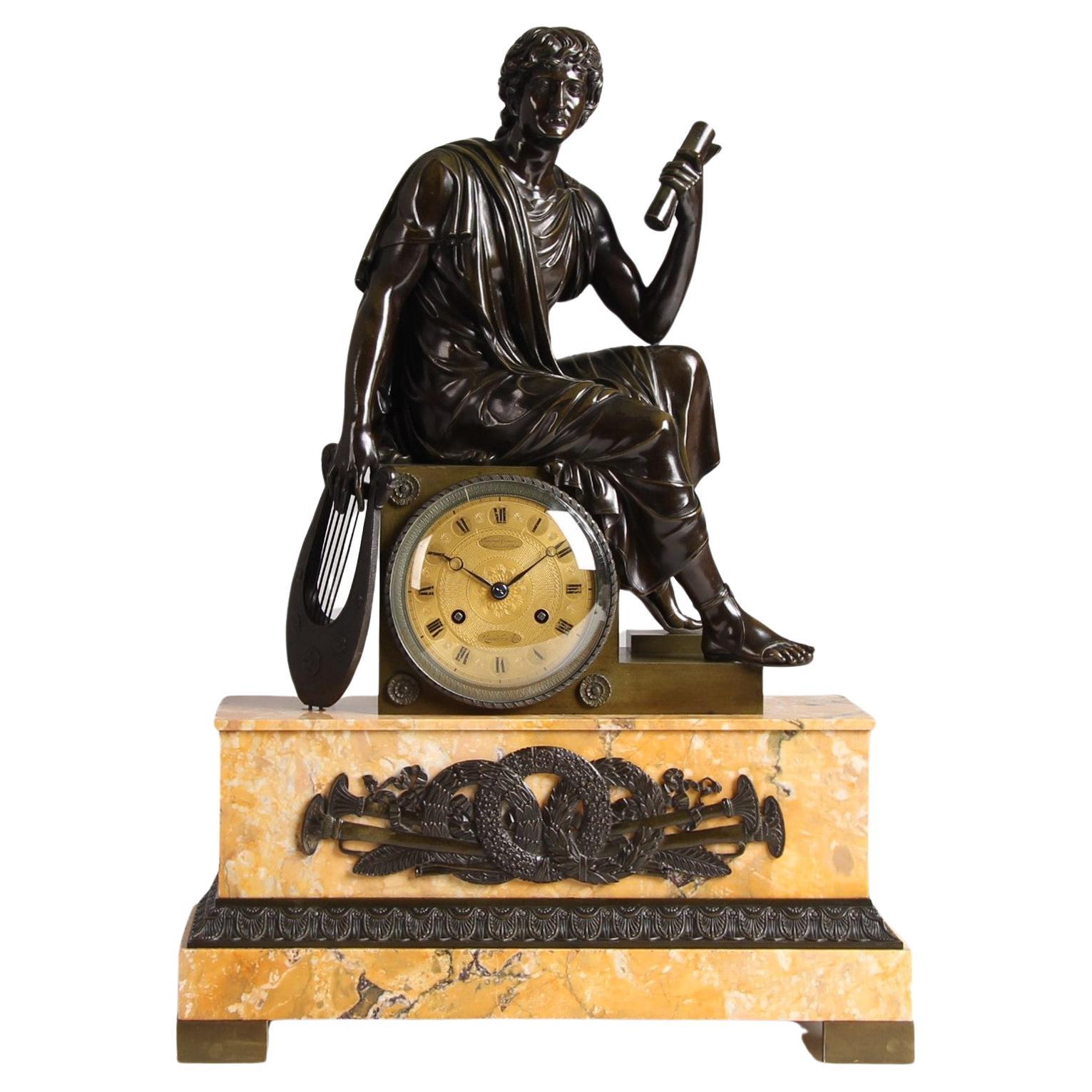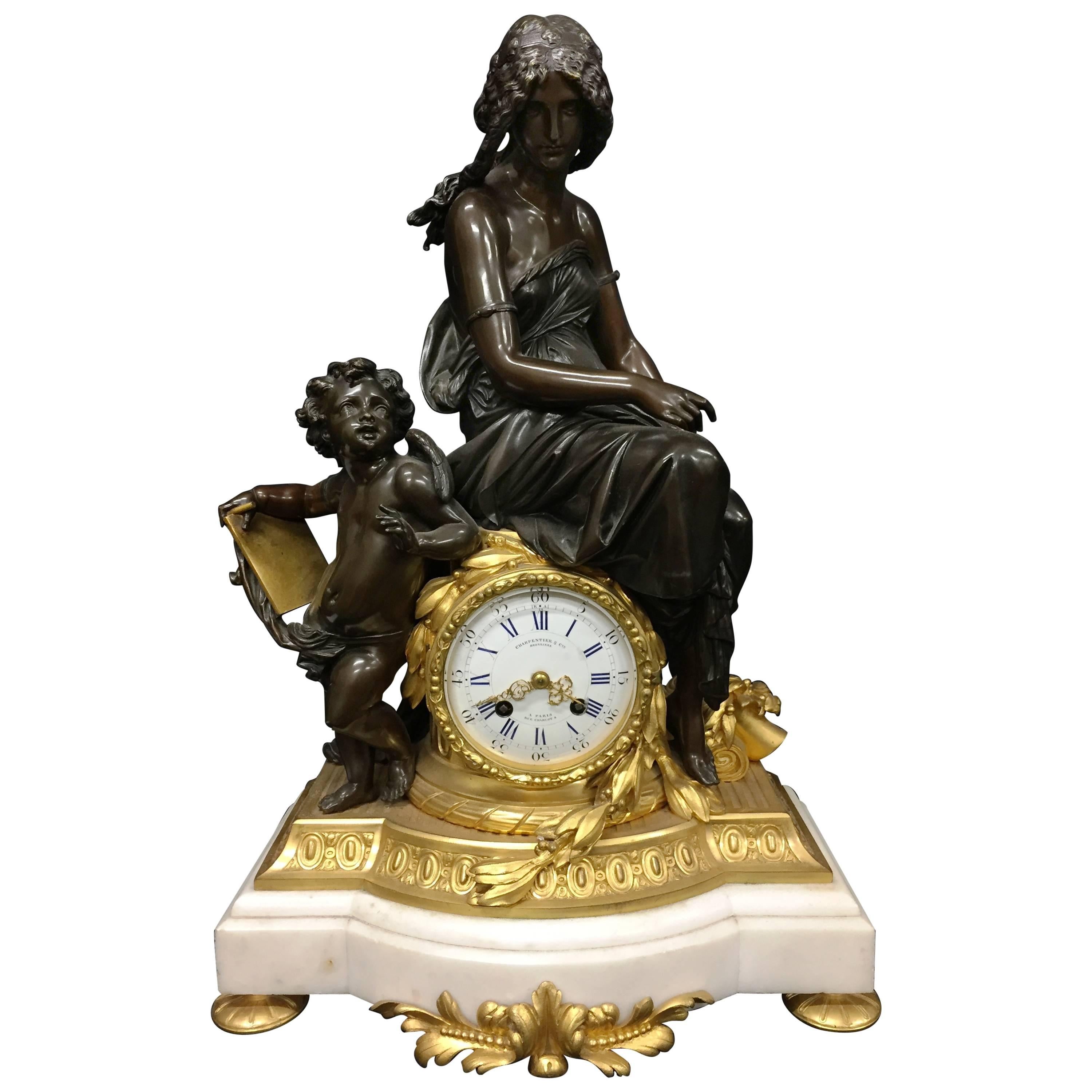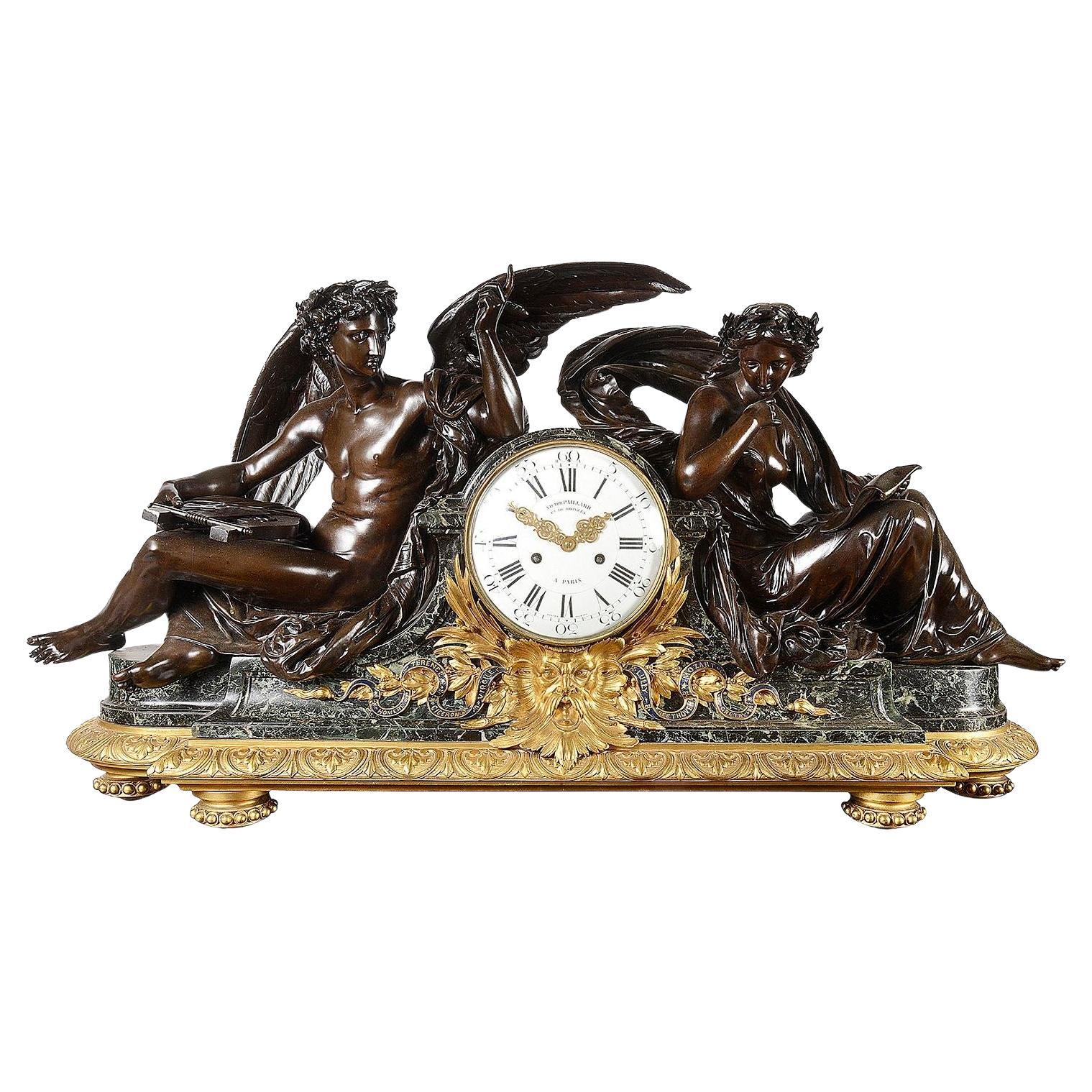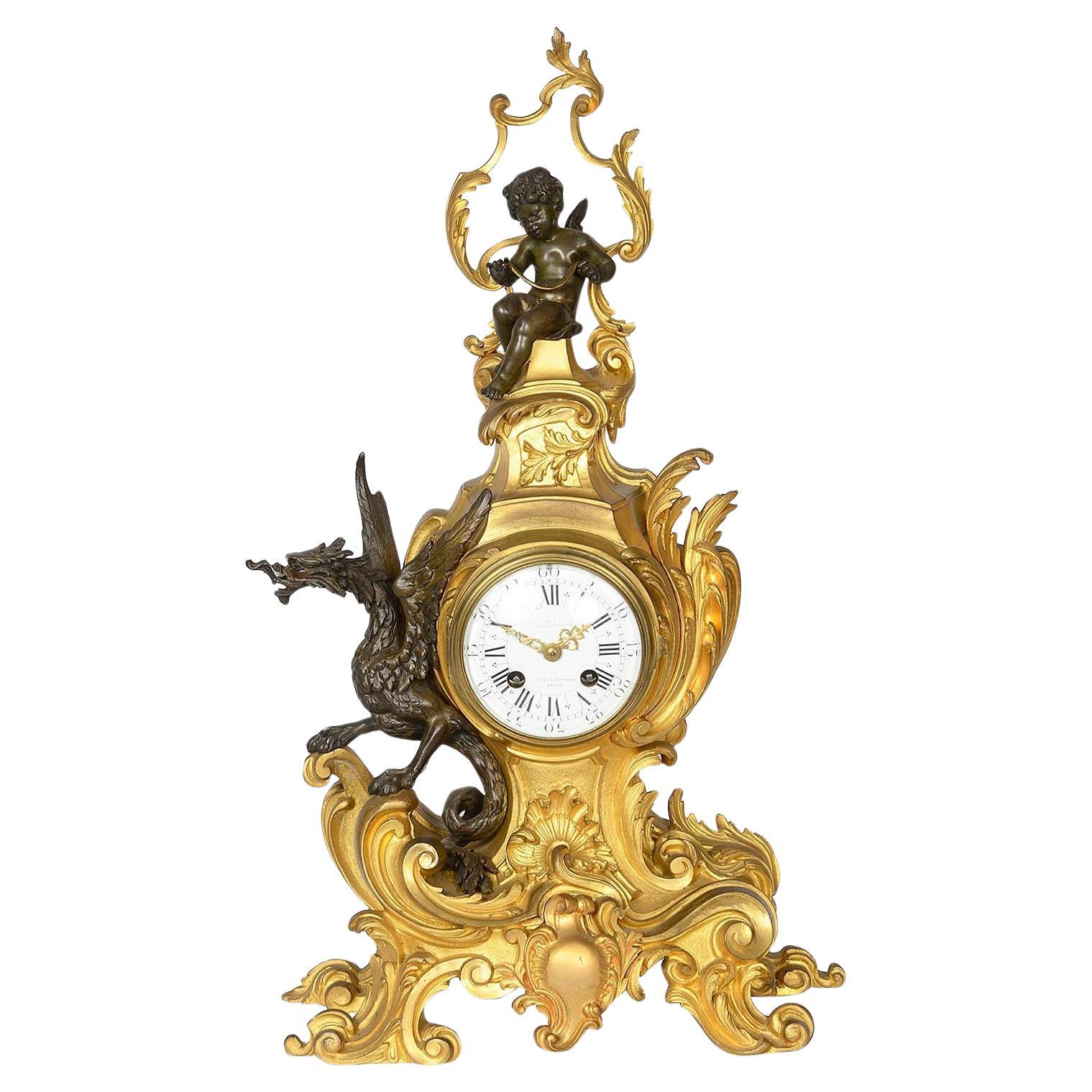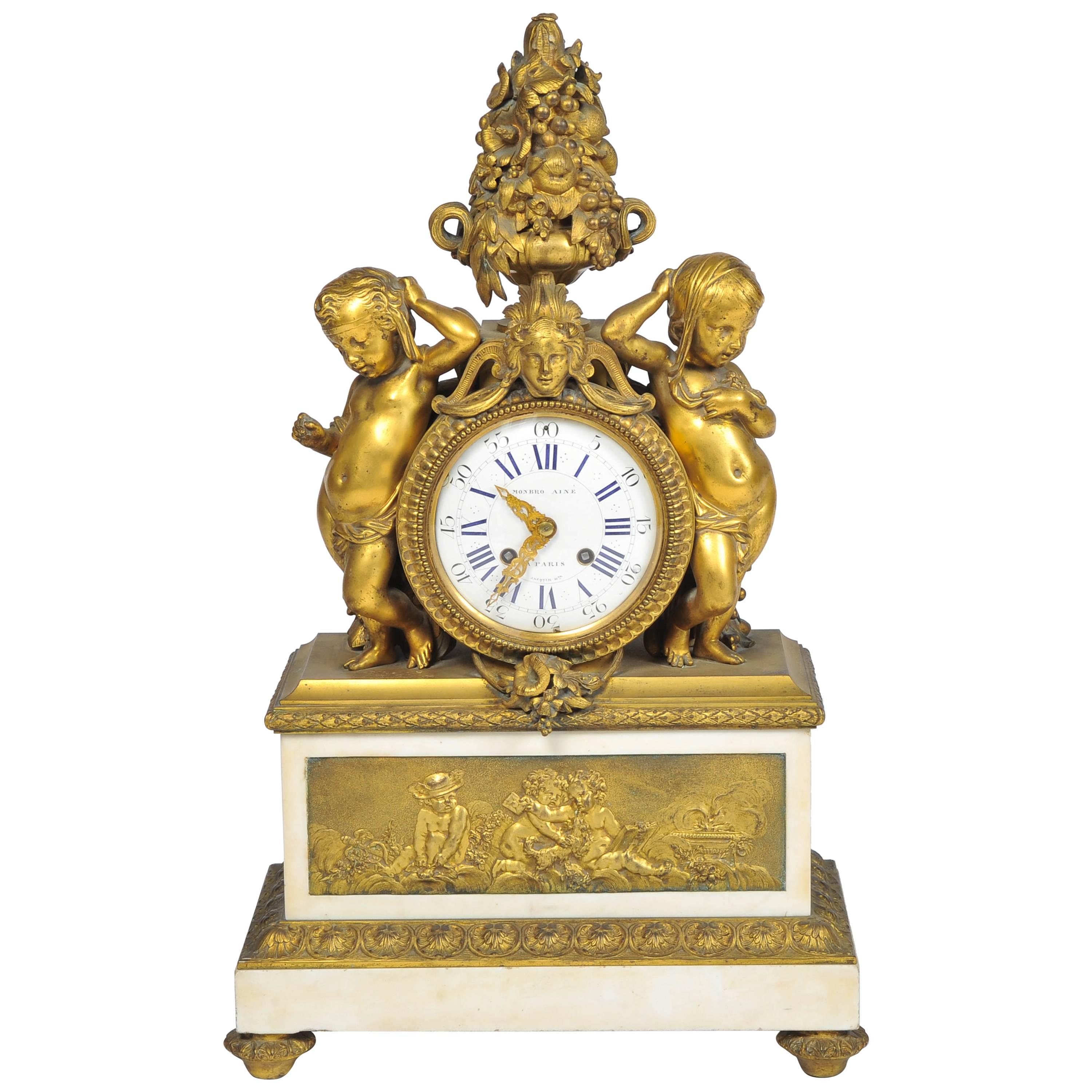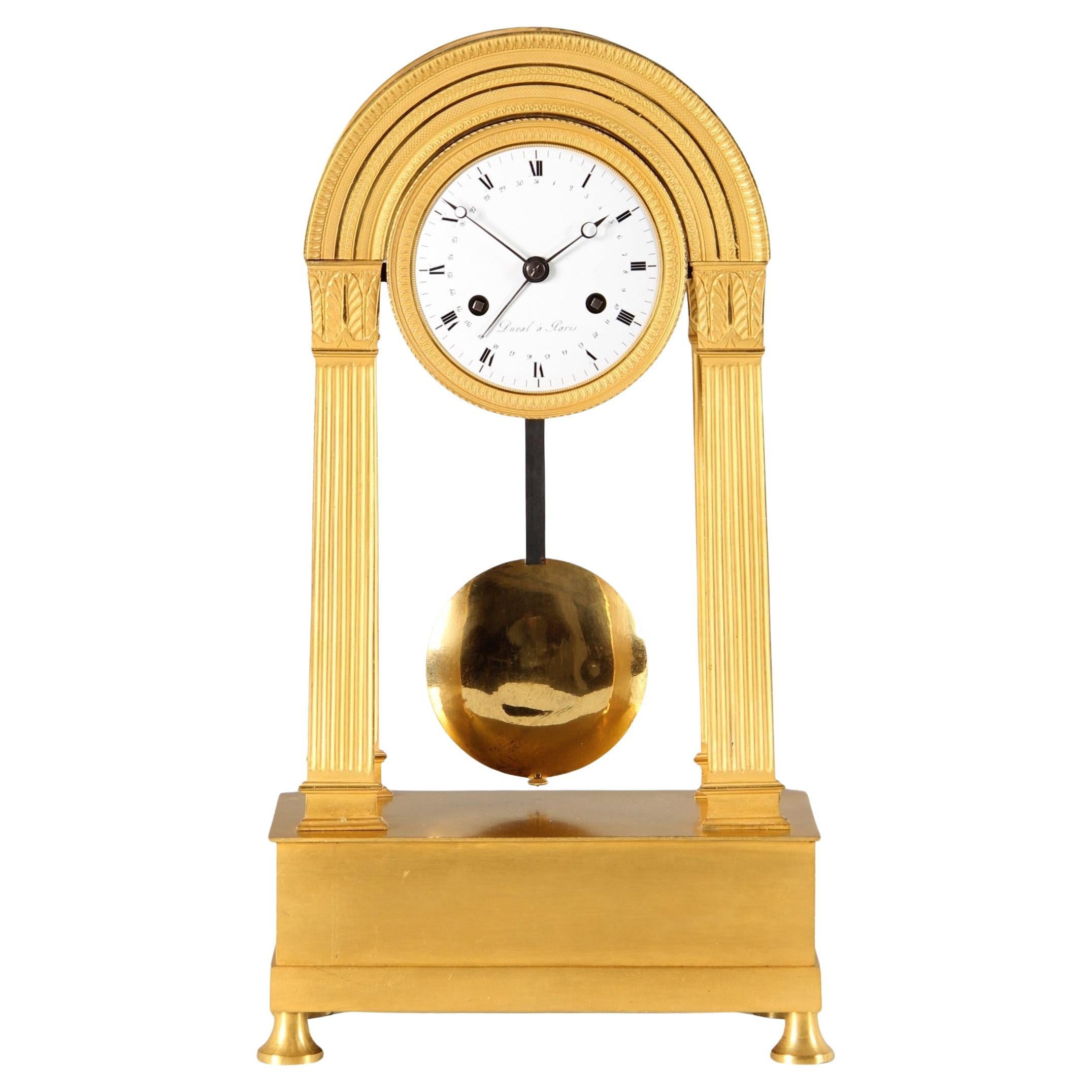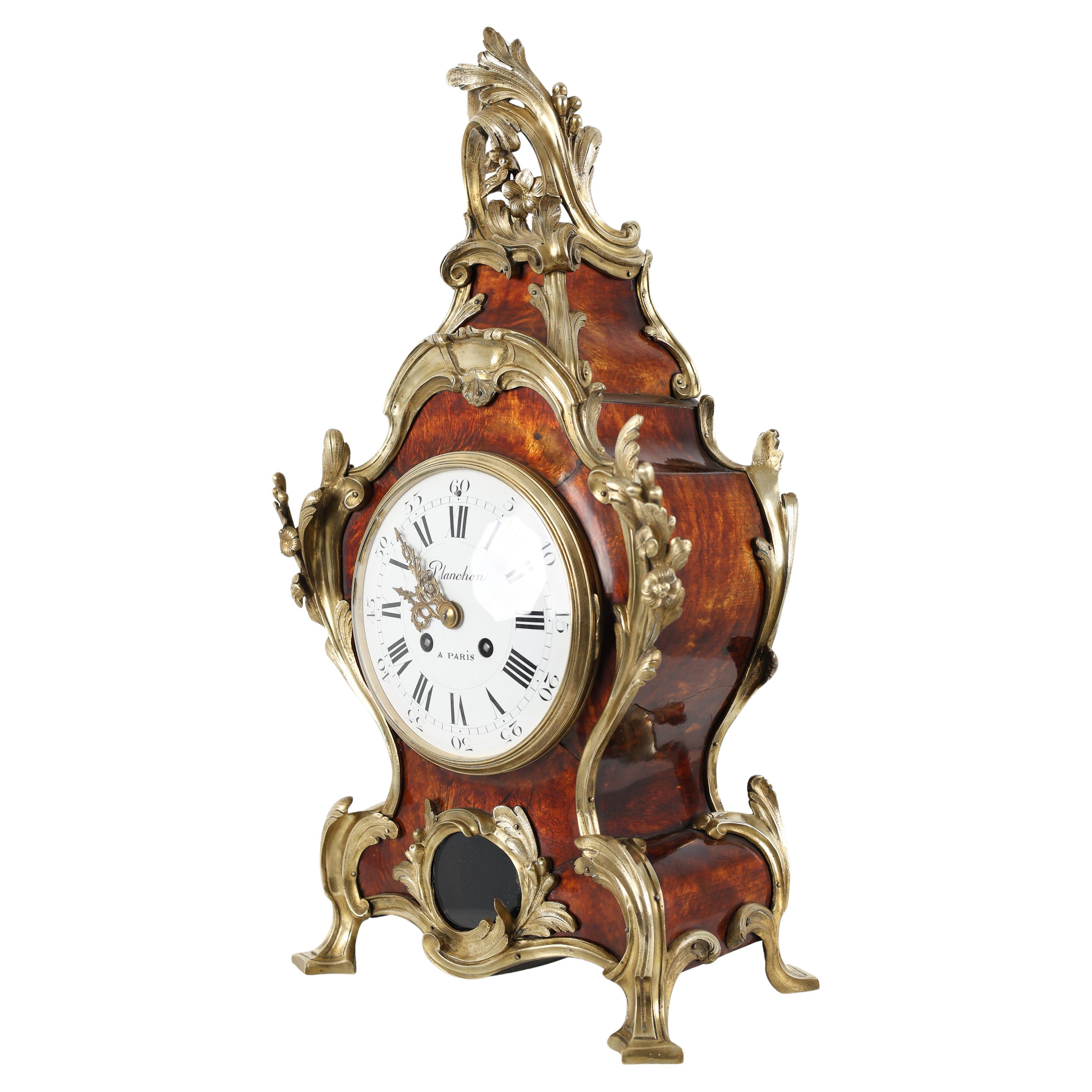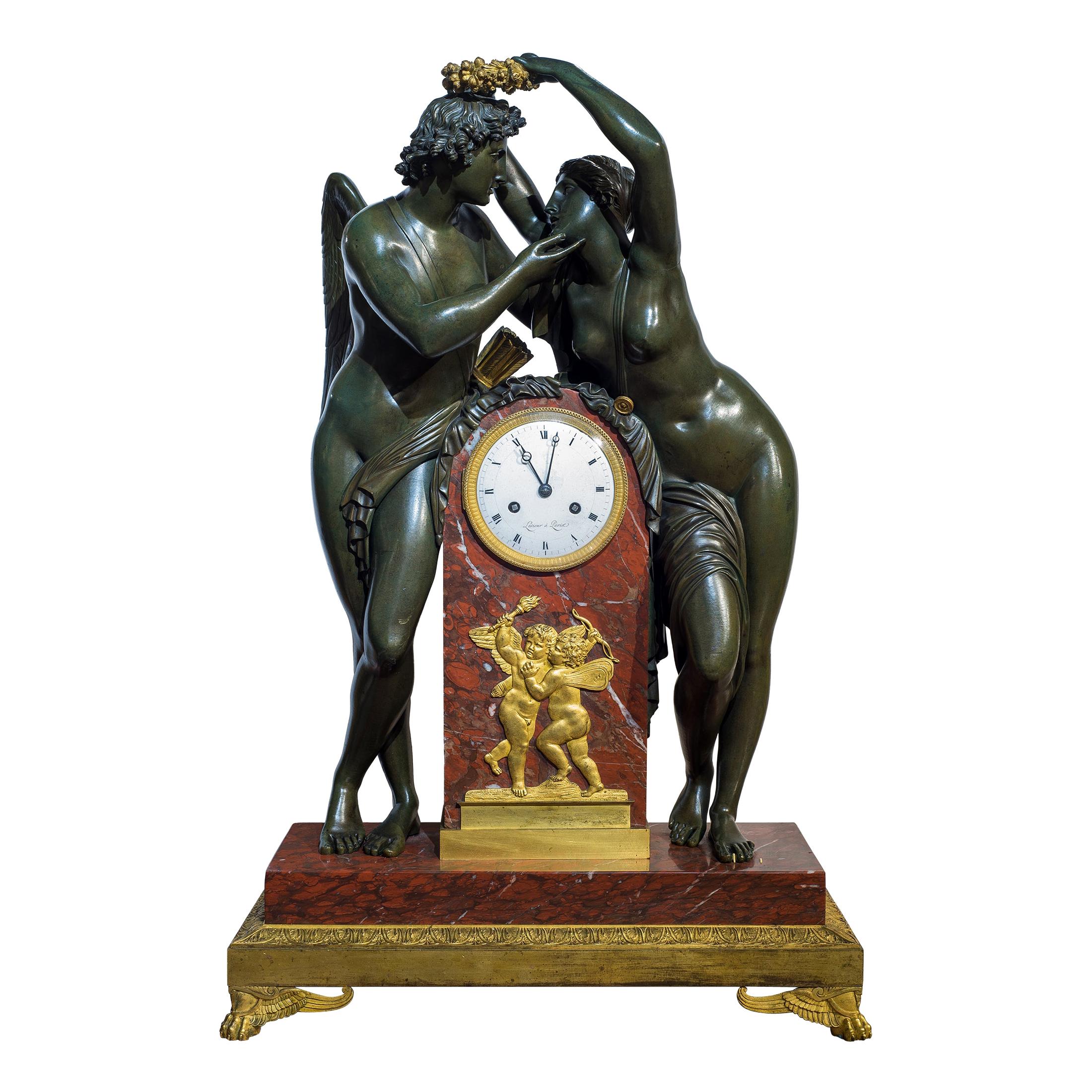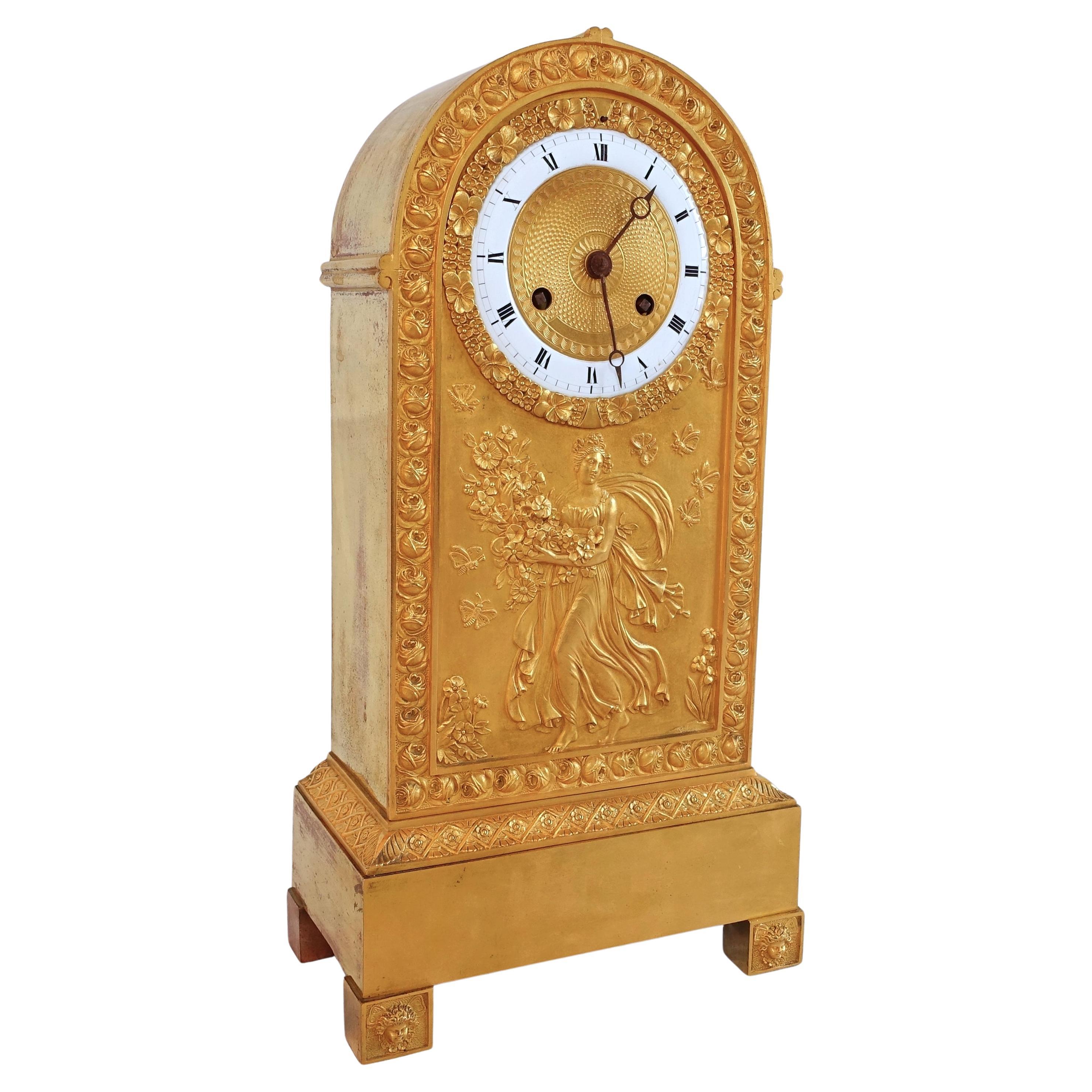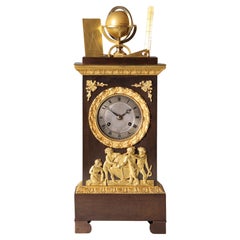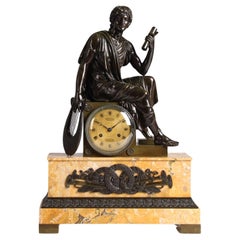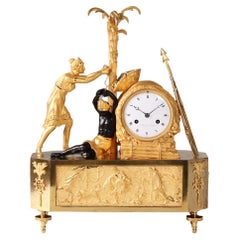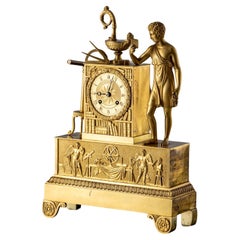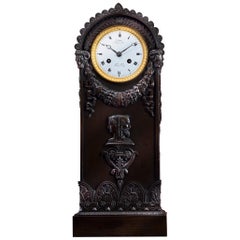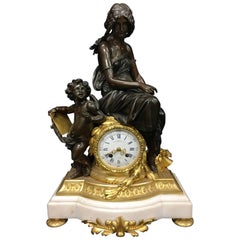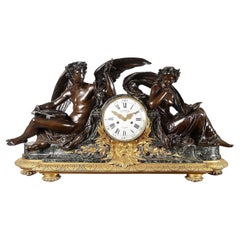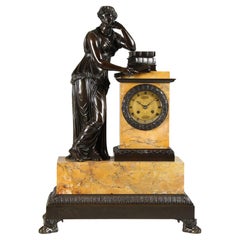
19th Century French Mantel Clock, Allegory Of Study, Paris circa 1830
View Similar Items
Want more images or videos?
Request additional images or videos from the seller
1 of 19
19th Century French Mantel Clock, Allegory Of Study, Paris circa 1830
About the Item
- Creator:Lesieur (Clockmaker)
- Attributed to:Pierre-Victor Ledure (Sculptor)
- Dimensions:Height: 26.38 in (67 cm)Width: 18.9 in (48 cm)Depth: 9.85 in (25 cm)
- Style:Restauration (Of the Period)
- Materials and Techniques:
- Place of Origin:
- Period:
- Date of Manufacture:1830
- Condition:Wear consistent with age and use. Beautiful condition with slight signs of age and wear. The movement has been dismantled and overhauled. It runs absolutely reliably and accurately.
- Seller Location:Greven, DE
- Reference Number:1stDibs: LU5419242086692
About the Seller
4.9
Vetted Professional Seller
Every seller passes strict standards for authenticity and reliability
Established in 2014
1stDibs seller since 2020
180 sales on 1stDibs
Authenticity Guarantee
In the unlikely event there’s an issue with an item’s authenticity, contact us within 1 year for a full refund. DetailsMoney-Back Guarantee
If your item is not as described, is damaged in transit, or does not arrive, contact us within 7 days for a full refund. Details24-Hour Cancellation
You have a 24-hour grace period in which to reconsider your purchase, with no questions asked.Vetted Professional Sellers
Our world-class sellers must adhere to strict standards for service and quality, maintaining the integrity of our listings.Price-Match Guarantee
If you find that a seller listed the same item for a lower price elsewhere, we’ll match it.Trusted Global Delivery
Our best-in-class carrier network provides specialized shipping options worldwide, including custom delivery.More From This Seller
View All19th Century Mantel Clock "Astronomy", France circa 1830
Located in Greven, DE
Antique mantel clock on the theme of astronomy
France
Bronze
Charles X around 1830
Dimensions: H x W x D: 48 x 19 x 10 cm
Description:
Unusual and beautifully crafted bronze mante...
Category
Antique 19th Century French Charles X Table Clocks and Desk Clocks
Materials
Bronze
1830s French Table Clock, signed by LESIEUR á Paris, Pendule "Virgil the Poet"
By Lesieur
Located in Greven, DE
Pendule - Virgil the Poet
Paris
Bronze, marble
around 1830
Dimensions: H x W x D: 61 x 43 x 17 cm
Description:
Large and, at around 30 kg, very heavy French bronze clock from the ...
Category
Antique 1830s French Restauration Table Clocks and Desk Clocks
Materials
Siena Marble, Bronze
Early 19th Century French Empire Mantel Clock, Portal Pendule, Paris circa 1820
By Duval
Located in Greven, DE
Antique French round arch portal clock
France (Paris)
Bronze, enamel
Empire circa 1820
Dimensions: H x W x D: 47 x 26 x 12 cm
Description:
Very beautiful, strictly architecturally...
Category
Antique Early 19th Century French Empire Mantel Clocks
Materials
Bronze, Enamel
Early 19th Century Ormolu Mantel Clock, Atala freeing Chactas, Paris, circa 1810
Located in Greven, DE
Mantel Clock "Atala and Chactas"
Paris
Bronze (fire-gilt and patinated), enamel
Empire around 1810
Dimensions: H x W x D: 40 x 32 x 11 cm
Description:
Very rare and extremely high quality French mantel clock, so-called Pendule Au Bon Sauvage.
Depicted are scenes from the love story "Atala or the love of two savages in the desert" written by Francois René Vicomte de Chateaubriand in 1801. At the beginning of the 19th century, this was probably the most famous love story in Europe, but today it has been forgotten.
The story, set in present-day Louisiana (USA), is roughly rewritten about the forbidden love between Chactas, a young Indian, and Atala, the beautiful daughter of a Spaniard.
Chactas is captured in a battle between two Indian tribes, chained to a palm tree and is to be sacrificed. Atala wants to save his life and convert him to Christianity. She unties him from the palm tree at night and they flee together into the wilderness of North America. Their love for each other grows stronger and stronger and they have prospects for a future together.
The story takes a tragic turn when Atala, who must remain a virgin due to a vow made by her mother, can no longer withstand the conflict of her feelings and commits suicide.
The main group of characters thus shows Chacta's liberation through Atala. Atala is leaning against a pile of logs. The animal fur thrown over the logs and the weapons leaning against the stack on the right give the impression of a night camp.
The bronze is of rarely beautiful quality, finely chiselled and makes the scene appear very lively. The contrast of fire-gilded and patinated bronze adds tension to the composition.
In the base we see the Entombment as the end of the tragic love story. This bronze work is also very detailed, the interplay of bright and matt gilding makes the flat relief appear much deeper than it is.
The depiction of the mantel clock presented here shows that the exotic was only known from stories and that the bronzier had his own ideas about the appearance of this distant world. The Indian, for example, has very European facial features and his skin was not black in reality, of course. The palm tree was also certainly not found in the North American wilderness.
The heart of the clock is a French pendulum movement, integrated into the wooden pile, with an eight-day power reserve and a lock plate striking a bell on the half and full hour. The pendulum is suspended on a thread, typical of the period. The classically shaped hands, so-called Breguet hands, are also typical of the time.
The enamelled dial has black Roman hour numerals, Arabic quarter hours and bears the signature: Le Roy hr. de Madame A PARIS.
Interesting facts:
The period from 1795 to about 1815 saw the creation of probably the most spectacular group of bronzes: The "Au bon Sauvage" pendulums - depictions of the "Noble Savage".
Today's viewers react to these objects with both fascination and irritation. Enthusiastic on the one hand about the obvious quality of the detailed bronzes and the allure of the exotic, on the other hand distanced and cautious because of the possible discrimination that is suspected behind them. The ambivalence of this feeling motivates the search for the conditions of origin of these pendulums.
Europeans found their new ideal of the natural man primarily in fictional and realistic travelogues about the Indians of North America...
Category
Antique Early 19th Century French Empire Mantel Clocks
Materials
Ormolu
19th Century French Louis XVI Style "Astronomy" Mantel Clock, circa 1845
By Perrelet
Located in Greven, DE
French mantel clock "Astronomy"
Paris
Bronze, marble
Mid 19th century
Dimensions: H x W x D: 38 x 55 x 16 cm
Description:
A Louis XVI-style figural mantel clock mounted on a two-t...
Category
Antique 1840s French Louis XVI Mantel Clocks
Materials
Marble, Bronze
Early 19th Century Pendule Portefaix, Mantel Clock, Paris and Brussels, c. 1810
By J. J. Hanset Bruxelles 1
Located in Greven, DE
Empire Pendule Portefaix
Paris, Brussels
Bronze, enamel
Empire around 1810
Dimensions: H x W x D: 36 x 28 x 11 cm
Description:
Beautiful, fire-gilded and patinated bronze mantel c...
Category
Antique Early 19th Century Belgian Empire Mantel Clocks
Materials
Brass, Bronze, Enamel
You May Also Like
Mantel Clock, Allegory of the Sciences, France around 1830
Located in Greding, DE
Fireplace clock made of fire-gilt bronze with a rectangular base with a relief depicting winged putti with the attributes of the various sciences. Above it is a clock case in the sha...
Category
Antique 1830s French Mantel Clocks
Materials
Bronze
French Early 19th Century Empire Period Mantel Clock Signed Ledure
By Pierre-Victor Ledure
Located in Worpswede / Bremen, DE
Very fine early 19th century Empire period mantel clock of patinated bronze. It is signed by one of the best Parisian bronzers Pierre Victor Ledure and h...
Category
Antique Early 19th Century French Empire Mantel Clocks
Materials
Bronze
French Mantel Clock 19th Century, France, circa 1860
Located in Brighton, Sussex
A very good quality French 19th Century gilded ormolu and bronze mantel clock having a mother and child above and to the side of the clock face. Mounted on a white marble base.
Category
Antique 19th Century French Mantel Clocks
Materials
Bronze
Magnificent French 19th Century Mantel Clock, Victor Paillard, Paris
By Victor Paillard
Located in Brighton, Sussex
A magnificent 19th century bronze mantel clock depicting allegorical figures representing Geography and literature. The white enamel clock face, Roman numerals, an eight day duration...
Category
Antique 19th Century French Classical Greek Mantel Clocks
Materials
Bronze
19th Century French mantel clock
Located in Brighton, Sussex
A very good quality late 19th Century French gilded ormolu and patinated bronze mantel clock, having a seated cherub holding the rains of a winged dragon pulling a scrolling foliate ...
Category
Antique 1880s French Louis XVI Mantel Clocks
Materials
Ormolu
19th Century French Mantel Clock, by 'Monbro Aine, Paris'
By Monbro Ainé 1
Located in Brighton, Sussex
A very good quality, large French 19th century gilded ormolu and white marble mantel clock, signed; 'Monbro Aine, Paris'. Having an urn of grapes with semi...
Category
Antique 1860s French Napoleon III Mantel Clocks
Materials
Marble, Ormolu
Recently Viewed
View AllMore Ways To Browse
Amsterdam Clock
Hans Peter Craft
Antique Hotel Desk
Antique Stack Of Books
Drapery Ties
Castle Clock
Large Heavy Gold Cross
Bavarian Plates
Victor Ledure
Lock Of Hair
Bavarian Table
Arts And Crafts Oak Clocks
Antique Bavarian Plates
Table Made From Stacks Of Books
Victor Peter Lion
Cartier Santos Alarm Clock
Chelsea Ships Bell Clocks
Digital Desk Clock
